Tuesday 30 June 2009
Travel Photography Contest: Mysterious Places
http://blog.burrard-lucas.com/2009/06/travel-photography-contest-mysterious-places/
The deadline for entry is 31st October 2009.
The deadline for entry is 31st October 2009.
Sunday 28 June 2009
Project 16: defining a point
Write down situations which would make a clear photograph of a point and find photographs that contain obvious points.
***
Small objects in a plane background. For example, a flower in a green (sometimes out of focus) background.

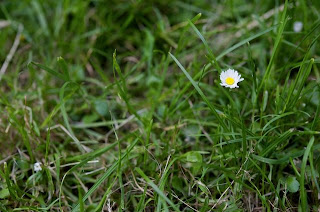
Small people or animal in a landscape. Some of the travel photographs intentionally include a small person or animal to attract viewers' attention and to make the photographs more interesting.
 Copyright: Steve Watkins http://www.vividplanet.com/
Copyright: Steve Watkins http://www.vividplanet.com/
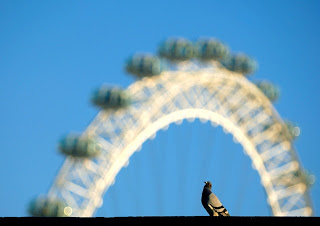 Copyright: Anthony Webb http://www.anthonywebb.com/
Copyright: Anthony Webb http://www.anthonywebb.com/
One of the famous photographs that the point actually becomes the main subject of the photograph, which I think is quite rare.
 Copyright: Stuart Franklin http://www.stuartfranklin.com/
Copyright: Stuart Franklin http://www.stuartfranklin.com/
***
Small objects in a plane background. For example, a flower in a green (sometimes out of focus) background.


Small people or animal in a landscape. Some of the travel photographs intentionally include a small person or animal to attract viewers' attention and to make the photographs more interesting.
 Copyright: Steve Watkins http://www.vividplanet.com/
Copyright: Steve Watkins http://www.vividplanet.com/ Copyright: Anthony Webb http://www.anthonywebb.com/
Copyright: Anthony Webb http://www.anthonywebb.com/One of the famous photographs that the point actually becomes the main subject of the photograph, which I think is quite rare.
 Copyright: Stuart Franklin http://www.stuartfranklin.com/
Copyright: Stuart Franklin http://www.stuartfranklin.com/
Saturday 27 June 2009
Assignment 1: the theory and practice of contrasts
(26/07/2009) Added tutor's comments.
1. Pointed/blunt
I found these fences in a park and thought the tip of the fences were a good example of the contrast of pointed and blunt. Therefore, this is very straight, just contrast of the shapes and no abstract meaning behind the photographs. It was a challenge to take these photographs because of the bright background (sky/tree) and the dark subject (fence). The fences are shown as almost silhouettes in the photographs, which actually emphasis the contrast of the shapes.
Pointed
 Shutter speed: 1/60 sec, Aperture: f/8, Focal length: 60mm, ISO 800
Shutter speed: 1/60 sec, Aperture: f/8, Focal length: 60mm, ISO 800
Blunt
 Shutter speed: 1/60 sec, Aperture: f/10, Focal length: 60mm, ISO 800
Shutter speed: 1/60 sec, Aperture: f/10, Focal length: 60mm, ISO 800
[Tutor's comment]
In these two images you have made a good visual contrast. The framing of both fences by using the diagonal line has added some graphical elements to the image. The black railing conrast well against the trees and sky of the background. The exposure has been controlled well to avoid over-exposure. On pointed I feel that the brick wall would be better not in the image. Although the use of a small depth of field has helped to blur it out of focus
2. Diagonal/rounded
I found these benches in the same park and the line of the bench seats could make a contrast of the diagonal and rounded. I could have been closer to the subject and take more abstract photographs by just showing the lines but I think it is more important to make it clear that both of the subjects are benches by showing the other part of the benches, which gives the two photographs a stronger connection and make the comparison more interesting.
Diagonal
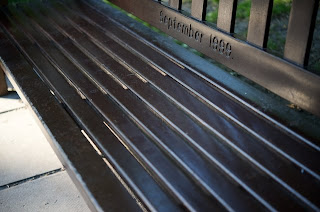 Shutter speed: 1/200 sec, Aperture: f/2.8, Focal length: 60mm, ISO 800
Shutter speed: 1/200 sec, Aperture: f/2.8, Focal length: 60mm, ISO 800
Rounded
 Shutter speed: 1/250 sec, Aperture: f/2.8, Focal length: 60mm, ISO 800
Shutter speed: 1/250 sec, Aperture: f/2.8, Focal length: 60mm, ISO 800
[Tutor's comment]
Again you have made a very good visual contrast with the two benches. You have photographed each bench by including enough information for the view to understand the photograph. However, by adopting an abstract approach you have then created visual interest to the image. On diagonal I feel you could have cropped a bit closer to fill more of the frame with the slats of the bench. In rounded I particularly like the soft lighting and how the curve of the seat has been shown.
3. Many/few
Two close-up photographs of flowers. The number of flowers makes the contrast of many and few. To make the contrast obvious, similar colours of the flowers (purple) and background (green) were chosen, and shallow depth of field was used so that the subjects were isolated in a blurred background.
Many
 Shutter speed: 1/200 sec, Aperture: f/3.2, Focal length: 60mm, ISO 800
Shutter speed: 1/200 sec, Aperture: f/3.2, Focal length: 60mm, ISO 800
Few
 Shutter speed: 1/100 sec, Aperture: f/3.5, Focal length: 60mm, ISO 800
Shutter speed: 1/100 sec, Aperture: f/3.5, Focal length: 60mm, ISO 800
[Tutor's comment]
This is a great pair of images. The images contrast well together. In particular you have kept the same depth of field and colours, which further unites the images. I feel that few is a wonderful image. The focus has been well controlled for the repetition of the flower heads to recede in the frame.
4. Straight/curved
These are pavement in a park and show another example of the contrast of the graphical elements. In order to make the contrast obvious, the composition was carefully considered so that there were no other elements in the frame. The subjects were slightly off-centred, which makes the very simple photographs slightly dynamic.
Straight
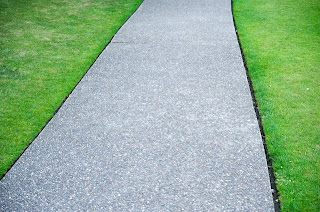 Shutter speed: 1/100 sec, Aperture: f/7.1, Focal length: 60mm, ISO 800
Shutter speed: 1/100 sec, Aperture: f/7.1, Focal length: 60mm, ISO 800
Curved
 Shutter speed: 1/100 sec, Aperture: f/5.6, Focal length: 60mm, ISO 800
Shutter speed: 1/100 sec, Aperture: f/5.6, Focal length: 60mm, ISO 800
[Tutor's comment]
A set of deceptively simple images. However I can appreciate the care and attention to the composition. The sections have been carefully chosen to eliminate the background detail. The grey path is set off by the green grass. Well done on such a considered pair of images.
5. Long/short
These are still life photographs of two different kinds of peppers and show an example of the contrast of long and short. In terms of the composition, the subjects were placed horizontally in the centre and vertically about 1/3 from the bottom of the frame, which makes the photographs very static. Also the colour makes a contrast (background (white) and subject (red pepper and green stalk)) in each photograph.
Long
 Shutter speed: 1/30 sec, Aperture: f/11, Focal length: 60mm, ISO 200, tripod, portable flash
Shutter speed: 1/30 sec, Aperture: f/11, Focal length: 60mm, ISO 200, tripod, portable flash
Short
 Shutter speed: 1/60 sec, Aperture: f/11, Focal length: 60mm, ISO 200, tripod, portable flash
Shutter speed: 1/60 sec, Aperture: f/11, Focal length: 60mm, ISO 200, tripod, portable flash
[Tutor's comment]
Another simple but effective set of images. The size of the peppers does contrast the two words well. The composition is effective and the wine glass does add some scale into the image. The use of the flash has caused some bright highlights on the skin of the peppers - diffusing the light or using a reflector could avoid these. Assignment 4 will get you to look at different lighting sources so this is an area covered in the course.
The white backdrop has kept the image crisp and allows the read to dominate the frame.
6. Large/small
These are another pair of photographs of vegetables and show an example of the contrast of large and small. Again the subjects were placed in the centre, which makes the photographs look very static. The white balance was altered in the post-production phase so that the photographs convey warm feeling in accordance with the colour of the onions.
Large
 Shutter speed: 1/60 sec, Aperture: f/11, Focal length: 60mm, ISO 200, tripod, portable flash
Shutter speed: 1/60 sec, Aperture: f/11, Focal length: 60mm, ISO 200, tripod, portable flash
Small
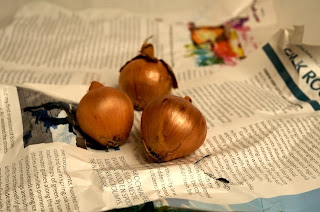 Shutter speed: 1/60 sec, Aperture: f/11, Focal length: 60mm, ISO 200, tripod, portable flash
Shutter speed: 1/60 sec, Aperture: f/11, Focal length: 60mm, ISO 200, tripod, portable flash
[Tutor's comment]
In these images I feel that the difference in size is not as clearly shown as in the above images as the framing is different between the two images. The composition is effective with the use of the newsprint. I feel that the white balance is slightly too warm - although I know you wished to emphasise the warmth of the onions. The depth of field in both images is quite small, as not all the onions appear to be in focus. I feel that a larger depth of field would be better to ensure all the onions are in focus.
7. Liquid/solid
These are two photographs of a wine glass, in which white sparkling wine is being poured in one photograph and golden beads are being put in the other. They show the contrast of liquid and solid. The bubbles that the sparkling wine generates look like beads but they can only exist by contained in the liquid, whereas the actual beads are solid existence and can exist forever.
Liquid
 Shutter speed: 1/60 sec, Aperture: f/22, Focal length: 60mm, ISO 200, tripod, portable flash
Shutter speed: 1/60 sec, Aperture: f/22, Focal length: 60mm, ISO 200, tripod, portable flash
Solid
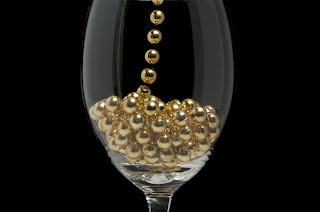 Shutter speed: 1/60 sec, Aperture: f/22, Focal length: 60mm, ISO 200, tripod, portable flash
Shutter speed: 1/60 sec, Aperture: f/22, Focal length: 60mm, ISO 200, tripod, portable flash
[Tutor's comment]
A wonderful pairing of images - and one of the best examples I have seen for this set of words. Well done on such an accomplished pair of images. The black background allows the glass and the colour of the beads and wine to be seen. The lighting is well controlled to prevent any highlights on the glass. The composition is excellent with the crop on just the main part of the glass.
8. Still/moving
These are two photographs of Christmas decoration balls, which show the contrast of still and moving. The photograph to show stillness was just taken when the balls were not moving and the other photograph was taken when one of the balls was moving using a slow shutter speed and multiple flash firing. I intentionally made one ball to stay still because it is necessary to have something same in both photographs in order to emphasis the difference (the movement in this case).
Still
 Shutter speed: 1.6 sec, Aperture: f/22, Focal length: 60mm, ISO 200, tripod, portable flash
Shutter speed: 1.6 sec, Aperture: f/22, Focal length: 60mm, ISO 200, tripod, portable flash
Moving
 Shutter speed: 1.6 sec, Aperture: f/22, Focal length: 60mm, ISO 200, tripod, portable flash
Shutter speed: 1.6 sec, Aperture: f/22, Focal length: 60mm, ISO 200, tripod, portable flash
[Tutor's comment]
In this pair you have shown good exposure control to blur the movement. In addition you have shown a multiple flash technique, which can be quite difficult to master. The background has been well chosen as it fits the soft colours of the decorations. In terms of composition I feel that the images lack something but do show excellent technical control.
9. Smooth/rough
This is a photograph to show the contrast of smooth and rough in one photograph. I found this tree in a park and I do not know the reason why the bark was clearly divided into two areas, I thought it was a very good example of the contrast. It is not something the photographer has created in any way, but discovering a contrast in the real world would probably be one of the important skills for photographers.
Smooth and rough
 Shutter speed: 1/60 sec, Aperture: f/4, Focal length: 60mm, ISO 800
Shutter speed: 1/60 sec, Aperture: f/4, Focal length: 60mm, ISO 800
[Tutor's comment]
In this image you have recognised a good scene for the image. You have adopted a very straight on approach to the truck, which I think suits the image well. The exposure is well controlled. You could possibly use a smaller depth of field (if possible on your lens) to further blur the background.
[Tutor's comment]
Summary
An excellent start to the course. You have understood the essence of the assignment and produced images, which visually contrast the words. In addition each set of images work as a pair. You have shown an ability to recognise both found scenes in the environment - e.g. straight/curved; pointed/blunt and to create your own still-life arrangements e.g. liquid/solid; long/short.
I feel that you have strong visual skills combined with good technical skills and that the course will further enhance both these elements. In addition you will find that the process of reviewing your work will allow you to be more self-critical of your images.
In some of your images you have used portable flash - if you haven't already come across Strobist - I highly recommend it for a source of tips on how to use your flashgun creatively. You can check out:
http://strobist.blogspot.com/
http://www.flickr.com/groups/strobist/
1. Pointed/blunt
I found these fences in a park and thought the tip of the fences were a good example of the contrast of pointed and blunt. Therefore, this is very straight, just contrast of the shapes and no abstract meaning behind the photographs. It was a challenge to take these photographs because of the bright background (sky/tree) and the dark subject (fence). The fences are shown as almost silhouettes in the photographs, which actually emphasis the contrast of the shapes.
Pointed
 Shutter speed: 1/60 sec, Aperture: f/8, Focal length: 60mm, ISO 800
Shutter speed: 1/60 sec, Aperture: f/8, Focal length: 60mm, ISO 800Blunt
 Shutter speed: 1/60 sec, Aperture: f/10, Focal length: 60mm, ISO 800
Shutter speed: 1/60 sec, Aperture: f/10, Focal length: 60mm, ISO 800[Tutor's comment]
In these two images you have made a good visual contrast. The framing of both fences by using the diagonal line has added some graphical elements to the image. The black railing conrast well against the trees and sky of the background. The exposure has been controlled well to avoid over-exposure. On pointed I feel that the brick wall would be better not in the image. Although the use of a small depth of field has helped to blur it out of focus
2. Diagonal/rounded
I found these benches in the same park and the line of the bench seats could make a contrast of the diagonal and rounded. I could have been closer to the subject and take more abstract photographs by just showing the lines but I think it is more important to make it clear that both of the subjects are benches by showing the other part of the benches, which gives the two photographs a stronger connection and make the comparison more interesting.
Diagonal
 Shutter speed: 1/200 sec, Aperture: f/2.8, Focal length: 60mm, ISO 800
Shutter speed: 1/200 sec, Aperture: f/2.8, Focal length: 60mm, ISO 800Rounded
 Shutter speed: 1/250 sec, Aperture: f/2.8, Focal length: 60mm, ISO 800
Shutter speed: 1/250 sec, Aperture: f/2.8, Focal length: 60mm, ISO 800[Tutor's comment]
Again you have made a very good visual contrast with the two benches. You have photographed each bench by including enough information for the view to understand the photograph. However, by adopting an abstract approach you have then created visual interest to the image. On diagonal I feel you could have cropped a bit closer to fill more of the frame with the slats of the bench. In rounded I particularly like the soft lighting and how the curve of the seat has been shown.
3. Many/few
Two close-up photographs of flowers. The number of flowers makes the contrast of many and few. To make the contrast obvious, similar colours of the flowers (purple) and background (green) were chosen, and shallow depth of field was used so that the subjects were isolated in a blurred background.
Many
 Shutter speed: 1/200 sec, Aperture: f/3.2, Focal length: 60mm, ISO 800
Shutter speed: 1/200 sec, Aperture: f/3.2, Focal length: 60mm, ISO 800Few
 Shutter speed: 1/100 sec, Aperture: f/3.5, Focal length: 60mm, ISO 800
Shutter speed: 1/100 sec, Aperture: f/3.5, Focal length: 60mm, ISO 800[Tutor's comment]
This is a great pair of images. The images contrast well together. In particular you have kept the same depth of field and colours, which further unites the images. I feel that few is a wonderful image. The focus has been well controlled for the repetition of the flower heads to recede in the frame.
4. Straight/curved
These are pavement in a park and show another example of the contrast of the graphical elements. In order to make the contrast obvious, the composition was carefully considered so that there were no other elements in the frame. The subjects were slightly off-centred, which makes the very simple photographs slightly dynamic.
Straight
 Shutter speed: 1/100 sec, Aperture: f/7.1, Focal length: 60mm, ISO 800
Shutter speed: 1/100 sec, Aperture: f/7.1, Focal length: 60mm, ISO 800Curved
 Shutter speed: 1/100 sec, Aperture: f/5.6, Focal length: 60mm, ISO 800
Shutter speed: 1/100 sec, Aperture: f/5.6, Focal length: 60mm, ISO 800[Tutor's comment]
A set of deceptively simple images. However I can appreciate the care and attention to the composition. The sections have been carefully chosen to eliminate the background detail. The grey path is set off by the green grass. Well done on such a considered pair of images.
5. Long/short
These are still life photographs of two different kinds of peppers and show an example of the contrast of long and short. In terms of the composition, the subjects were placed horizontally in the centre and vertically about 1/3 from the bottom of the frame, which makes the photographs very static. Also the colour makes a contrast (background (white) and subject (red pepper and green stalk)) in each photograph.
Long
 Shutter speed: 1/30 sec, Aperture: f/11, Focal length: 60mm, ISO 200, tripod, portable flash
Shutter speed: 1/30 sec, Aperture: f/11, Focal length: 60mm, ISO 200, tripod, portable flashShort
 Shutter speed: 1/60 sec, Aperture: f/11, Focal length: 60mm, ISO 200, tripod, portable flash
Shutter speed: 1/60 sec, Aperture: f/11, Focal length: 60mm, ISO 200, tripod, portable flash[Tutor's comment]
Another simple but effective set of images. The size of the peppers does contrast the two words well. The composition is effective and the wine glass does add some scale into the image. The use of the flash has caused some bright highlights on the skin of the peppers - diffusing the light or using a reflector could avoid these. Assignment 4 will get you to look at different lighting sources so this is an area covered in the course.
The white backdrop has kept the image crisp and allows the read to dominate the frame.
6. Large/small
These are another pair of photographs of vegetables and show an example of the contrast of large and small. Again the subjects were placed in the centre, which makes the photographs look very static. The white balance was altered in the post-production phase so that the photographs convey warm feeling in accordance with the colour of the onions.
Large
 Shutter speed: 1/60 sec, Aperture: f/11, Focal length: 60mm, ISO 200, tripod, portable flash
Shutter speed: 1/60 sec, Aperture: f/11, Focal length: 60mm, ISO 200, tripod, portable flashSmall
 Shutter speed: 1/60 sec, Aperture: f/11, Focal length: 60mm, ISO 200, tripod, portable flash
Shutter speed: 1/60 sec, Aperture: f/11, Focal length: 60mm, ISO 200, tripod, portable flash[Tutor's comment]
In these images I feel that the difference in size is not as clearly shown as in the above images as the framing is different between the two images. The composition is effective with the use of the newsprint. I feel that the white balance is slightly too warm - although I know you wished to emphasise the warmth of the onions. The depth of field in both images is quite small, as not all the onions appear to be in focus. I feel that a larger depth of field would be better to ensure all the onions are in focus.
7. Liquid/solid
These are two photographs of a wine glass, in which white sparkling wine is being poured in one photograph and golden beads are being put in the other. They show the contrast of liquid and solid. The bubbles that the sparkling wine generates look like beads but they can only exist by contained in the liquid, whereas the actual beads are solid existence and can exist forever.
Liquid
 Shutter speed: 1/60 sec, Aperture: f/22, Focal length: 60mm, ISO 200, tripod, portable flash
Shutter speed: 1/60 sec, Aperture: f/22, Focal length: 60mm, ISO 200, tripod, portable flashSolid
 Shutter speed: 1/60 sec, Aperture: f/22, Focal length: 60mm, ISO 200, tripod, portable flash
Shutter speed: 1/60 sec, Aperture: f/22, Focal length: 60mm, ISO 200, tripod, portable flash[Tutor's comment]
A wonderful pairing of images - and one of the best examples I have seen for this set of words. Well done on such an accomplished pair of images. The black background allows the glass and the colour of the beads and wine to be seen. The lighting is well controlled to prevent any highlights on the glass. The composition is excellent with the crop on just the main part of the glass.
8. Still/moving
These are two photographs of Christmas decoration balls, which show the contrast of still and moving. The photograph to show stillness was just taken when the balls were not moving and the other photograph was taken when one of the balls was moving using a slow shutter speed and multiple flash firing. I intentionally made one ball to stay still because it is necessary to have something same in both photographs in order to emphasis the difference (the movement in this case).
Still
 Shutter speed: 1.6 sec, Aperture: f/22, Focal length: 60mm, ISO 200, tripod, portable flash
Shutter speed: 1.6 sec, Aperture: f/22, Focal length: 60mm, ISO 200, tripod, portable flashMoving
 Shutter speed: 1.6 sec, Aperture: f/22, Focal length: 60mm, ISO 200, tripod, portable flash
Shutter speed: 1.6 sec, Aperture: f/22, Focal length: 60mm, ISO 200, tripod, portable flash[Tutor's comment]
In this pair you have shown good exposure control to blur the movement. In addition you have shown a multiple flash technique, which can be quite difficult to master. The background has been well chosen as it fits the soft colours of the decorations. In terms of composition I feel that the images lack something but do show excellent technical control.
9. Smooth/rough
This is a photograph to show the contrast of smooth and rough in one photograph. I found this tree in a park and I do not know the reason why the bark was clearly divided into two areas, I thought it was a very good example of the contrast. It is not something the photographer has created in any way, but discovering a contrast in the real world would probably be one of the important skills for photographers.
Smooth and rough
 Shutter speed: 1/60 sec, Aperture: f/4, Focal length: 60mm, ISO 800
Shutter speed: 1/60 sec, Aperture: f/4, Focal length: 60mm, ISO 800[Tutor's comment]
In this image you have recognised a good scene for the image. You have adopted a very straight on approach to the truck, which I think suits the image well. The exposure is well controlled. You could possibly use a smaller depth of field (if possible on your lens) to further blur the background.
[Tutor's comment]
Summary
An excellent start to the course. You have understood the essence of the assignment and produced images, which visually contrast the words. In addition each set of images work as a pair. You have shown an ability to recognise both found scenes in the environment - e.g. straight/curved; pointed/blunt and to create your own still-life arrangements e.g. liquid/solid; long/short.
I feel that you have strong visual skills combined with good technical skills and that the course will further enhance both these elements. In addition you will find that the process of reviewing your work will allow you to be more self-critical of your images.
In some of your images you have used portable flash - if you haven't already come across Strobist - I highly recommend it for a source of tips on how to use your flashgun creatively. You can check out:
http://strobist.blogspot.com/
http://www.flickr.com/groups/strobist/
Project 15: cropping
Select 3 photographs, then perform some cropping to find different pictures within the photographs.
***
1. A landscape photograph of the river Thames
The original photograph:
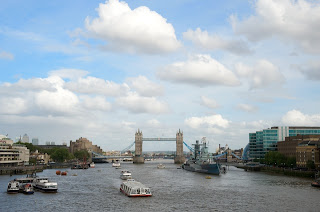
Making a panoramic photograph of the river.

Emphasising on the Tower Bridge and the sky.

Emphasising on the Tower Bridge and the South Bank.
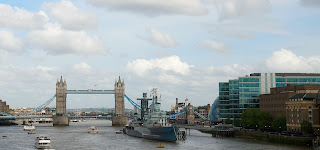
2. A snapshot of people enjoying sunshine on the grass
The original photograph
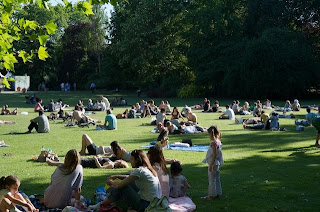
Focusing on the people by eliminating the dark trees in the background

Focusing on the people near the photographer in the centre to cut the both sides
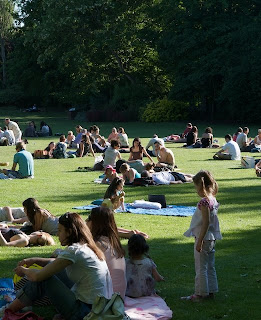
3. The photograph of a model standing in front of a house
The original photograph

Slightly cutting the right side and bottom to remove the unnecessary part (pavement, black fence on the right etc) and correct the position of the model
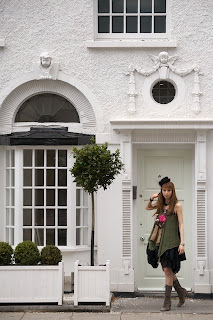
Cutting off the upper half to focus on the model and her movement towards the left side of the frame

Emphasising on the model and decoration of the doorway, and making the photograph static by placing the model in the centre

Making a close-up of the model
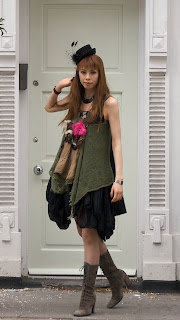
***
1. A landscape photograph of the river Thames
The original photograph:

Making a panoramic photograph of the river.

Emphasising on the Tower Bridge and the sky.

Emphasising on the Tower Bridge and the South Bank.

2. A snapshot of people enjoying sunshine on the grass
The original photograph

Focusing on the people by eliminating the dark trees in the background

Focusing on the people near the photographer in the centre to cut the both sides

3. The photograph of a model standing in front of a house
The original photograph

Slightly cutting the right side and bottom to remove the unnecessary part (pavement, black fence on the right etc) and correct the position of the model

Cutting off the upper half to focus on the model and her movement towards the left side of the frame

Emphasising on the model and decoration of the doorway, and making the photograph static by placing the model in the centre

Making a close-up of the model

Monday 15 June 2009
Friday 12 June 2009
UK Photographers Rights Guide v2
www.sirimo.co.uk/ukpr
Written by Linda Macpherson LL.B, Dip. L.P., LL.M
"This is intended to provide a short UK guide to the main legal restrictions on the right to take photographs and the right to publish photographs that have been taken."
Thursday 11 June 2009
Wednesday 10 June 2009
Japanese Old Photographs of the Bakumatsu-Meiji Periods
Funded by Grant-in-Aid for Scientific Research, the University of Nagasaki Library built the website, "Japanese Old Photographs of the Bakumatsu-Meiji Period", in 1997-1998; and the website, "High-definition Image Database of Old Photographs of Japan" in 2001-2002. The sites are open to the public and accessed by people with different interests from all over the world.
Tuesday 2 June 2009
FSA/OWI Favorites by US Library of Congress
Monday 1 June 2009
Subscribe to:
Posts (Atom)


